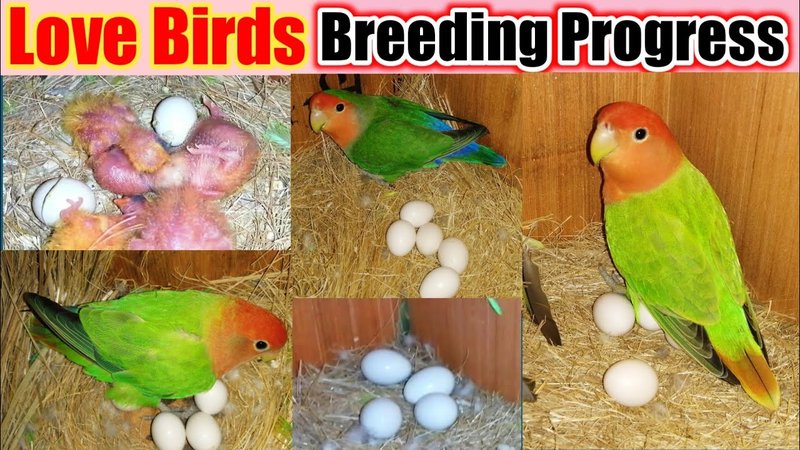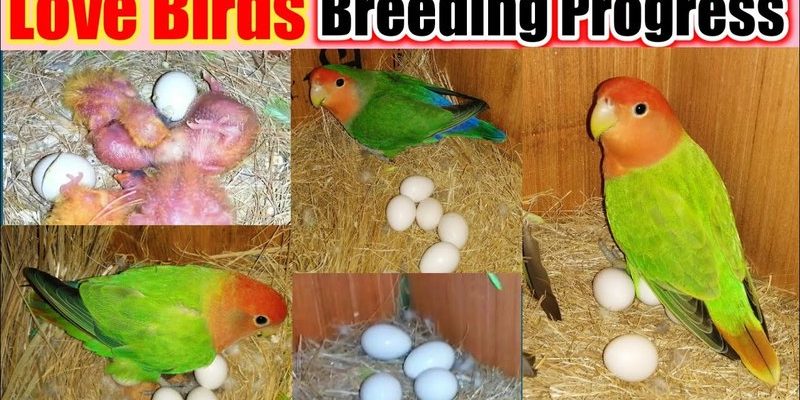
When it comes to lovebird breeding, there are three main phases to consider: nesting, egg care, and raising those delightful chicks. Each step has its own joys and challenges, but with the right information, you can help your feathered friends thrive. Let’s dive into the heart of the matter and explore how to best support your lovebirds as they embark on this beautiful journey of parenthood.
Nesting Habits of Lovebirds
Understanding your lovebirds’ nesting habits is like getting to know a new friend—they have their quirks and preferences. Lovebirds typically prefer to nest in small, cozy spaces. In captivity, this often means providing them with a snug nest box. A nest box sized around 6x6x12 inches is often ideal. Make sure the entrance is just big enough for your birds to squeeze in and out comfortably.
When choosing a nesting box, consider the material. Wooden boxes are a popular choice, as they mimic natural environments and help maintain a comfortable temperature. Inside the box, you can line it with soft materials like pine shavings or newspaper strips. These provide a comfortable environment for the female to lay her eggs. An important tip here is to ensure the nest box is placed in a quiet area of the cage, away from too much activity. Lovebirds can be shy and might feel more relaxed if they have a peaceful space.
You might be wondering how to know if your lovebirds are ready to breed. Well, courtship behavior is a significant clue. Look for signs like mutual preening, feeding each other, and spending lots of time snuggling together. If you see these behaviors, it’s likely they’re preparing to nest!
Egg Laying and Care
Once nesting is established, the next phase is egg laying. Female lovebirds can lay anywhere from 3 to 6 eggs, usually in a span of a couple of days. These tiny eggs are typically white, and a bit smaller than a grape. During this time, it’s vital to provide a well-balanced diet rich in nutrients, as this helps her stay healthy and support the developing eggs.
Egg care is crucial! Keep the environment calm and avoid disturbing the nest too much. Here’s the thing: if you handle the nest or eggs too often, it can stress your birds and lead to problems. Instead, take a hands-off approach. Monitor the food and water supply and ensure it’s clean and fresh.
To give your lovebirds the best chance at success, consider supplementing their diet with calcium sources like cuttlebone or mineral blocks. This is especially important as it helps with egg formation and can prevent issues like egg binding, which can be dangerous for the mother.
Incubation Period
Incubation is a critical time for the eggs, lasting about 21 to 28 days. During this period, the female will spend most of her time on the eggs, keeping them warm and turning them regularly to ensure even development. The male often takes on the role of providing food and support, which is why a balanced diet is essential for both parents.
You might be thinking, “What should I do during this time?” Honestly, just keep providing care without interference. Making sure they have a quiet space will do wonders. If you’re concerned about temperature or humidity, you can monitor the area around the nest, but avoid opening the box as much as possible.
If all goes well, the chicks will begin to hatch, and that’s when the real excitement starts!
Raising Lovebird Chicks
Once the chicks hatch, they’re incredibly vulnerable and reliant on their parents. Initially, they’re blind and covered in soft down, making them look like little fluffballs. The parents will take on the responsibility of feeding the chicks a special diet of regurgitated food. It’s fascinating to watch the parents bond with their new little ones during this time.
As the chicks grow, they’ll begin to open their eyes and develop feathers. Around 4 to 6 weeks, they’ll start to leave the nest box. It’s essential to provide them with a safe space to explore. Ensuring they have access to suitable perches, toys, and food is key to helping them grow strong and confident.
You may also want to consider the timing of separating the chicks from the parents. Many owners choose to wean them at around 8 weeks, but this can depend on the specific birds. Keep an eye on their development and behavior for the best decisions.
Common Problems and Solutions
Like any aspect of lovebird breeding, challenges can arise. One of the most common issues is egg binding, where the female struggles to lay her eggs. This can occur if she’s not getting enough calcium or if she’s stressed. If you suspect egg binding, it’s crucial to consult a veterinarian who specializes in birds right away.
Another problem might be rejection of the chicks, where parents refuse to feed or care for them. This can be distressing, but often it’s due to stress or a lack of experience. If this happens, you may need to step in and hand-feed the chicks with a specialized formula, but ensure you schedule some vet guidance first.
Finally, be aware of the emotional dynamics between your lovebirds. Sometimes, a pair might become aggressive, especially if one bird is overly dominant. In this case, separating the lovebirds temporarily might help reduce stress and tension.
Final Thoughts on Breeding Lovebirds
Breeding lovebirds is both a delightful and complex experience. From nesting and egg care to raising fluffy little chicks, each phase brings unique joys and challenges. You’ll learn to appreciate the beauty of their natural behaviors and the satisfaction of nurturing their lineage.
Whether you’re an experienced breeder or just starting, remember that patience and observation are key. Taking the time to understand your lovebirds’ needs and offering them a supportive environment can lead to a rewarding journey. As you watch the circle of life unfold in your own home, you’ll feel like a proud parent cheering on your feathery family.
With some love, care, and attention, you can enjoy this beautiful process to the fullest. Happy breeding!

